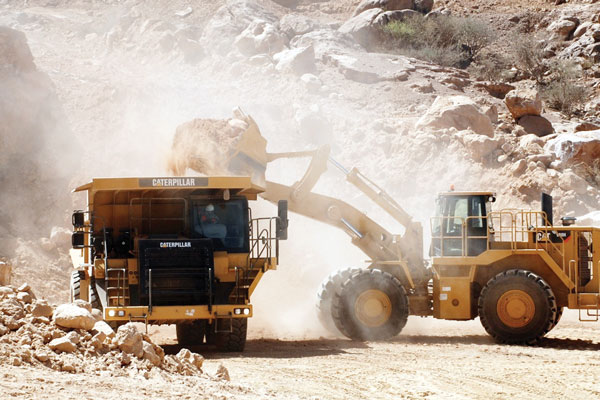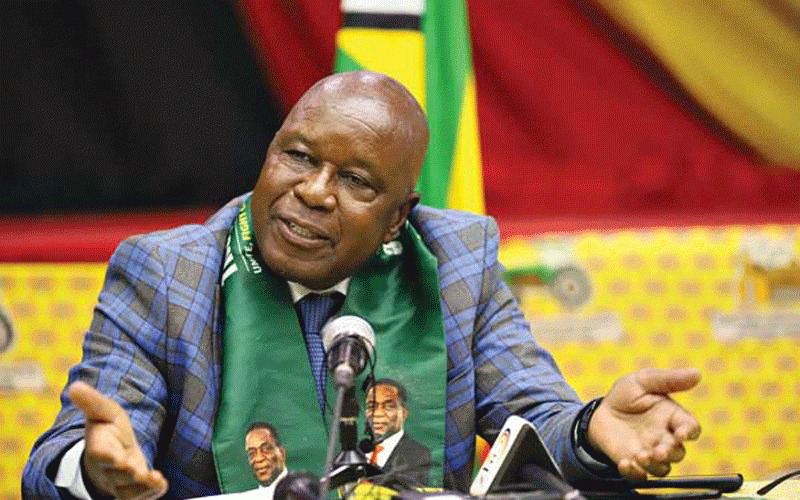
ZIMBABWE is said to be endowed with more than 50 different minerals, situated mostly in the Great Dyke, but economically there is nothing to show for it.
BY VENERANDA LANGA

In most areas where mining activity takes place what is only left are deep pits, impoverished villagers who have been relocated to new areas without compensation, and mining communities with dusty roads and lack of modern infrastructure to show that minerals can indeed develop a country.
But last week, the people of Chiadzwa, an area rich in diamond resources made history as one of their community advocacy groups, the Marange Development Trust, successfully challenged through the courts and stopped the government-owned Zimbabwe Consolidated Diamond Mining Company (ZCDC) from mining without an Environmental Impact Assessment (EIA) certificate.
An EIA plan is imperative before any project like mining, for example, is embarked upon. It identifies the environmental, social, economic and cultural impacts of a proposed project and details the measures that the project will take to avoid and mitigate those impacts.
Marange Development Trust, through its director Malvern Mudiwa, successfully challenged the operations of ZCDC that went on without an EIA at the High Court, resulting in the ZCDC interdicted by High Court judge Justice David Mangota from continuing with mining activities until it gets an EIA.
According to Zimbabwe Environmental Law Association (Zela) legal researcher, Tafadzwa Dhlakama, communities where mining or any other project is taking place, including their chiefs, councillors and other stakeholders must be consulted by the company embarking on the project as they craft their EIA before commencing operations.
But the people of Marange said the ZCDC never consulted them about the proposed mining activities, even so, that some villagers the company wants to relocate agree with that relocation.
- Chamisa under fire over US$120K donation
- Mavhunga puts DeMbare into Chibuku quarterfinals
- Pension funds bet on Cabora Bassa oilfields
- Councils defy govt fire tender directive
Keep Reading
“ZMDC is threatening to dig up graves of our forefathers in the Chiadzwa area to open up new mining areas,” read the affidavit by Marange Development Trust to the High Court.
“Had the EIA process been conducted in accordance with the law it would have enabled us to prepare in advance for the relocation of the graves and performance of the necessary cultural rites to preserve the integrity of our dead relatives.”
Other complaints by the Marange community were that they were affected by blasting activities caused by mining and hazards like diseases and respiratory problems associated with diamond mining, as it is done 10 metres away from their homesteads.
One of the most affected villages was Tinoengana, where ZCDC is said to be putting pressure on the villagers to comply, yet they have no EIA certificate to show that their operations are legal.
Dhlakama said section 9 of the Environment Management Act (Chapter 20:23) does not allow for projects like mining to be implemented by the developer without an EIA.
The Marange Development Trust affidavit said the ZCDC was putting pressure on villagers to relocate yet the company has not shown the people alternative accommodation and living arrangements.
The Environmental Management Agency (EMA) in the ZCDC case also showed that they failed to enforce the law as a body that administers the Environment Management Act.
EMA EIA officer Phanuel Mangisi was on Friday asked by journalists from the Zimbabwe Parliamentary Journalists Forum during a workshop by Zela on mining and the environment to explain why companies, including those owned by the government, were operating without EIAs.
The Dema Power project also began without an EIA, but Mangisi said they had recently acquired one.
“When companies do not have EIAs we open dockets so that they appear before the courts, but that process has challenges in that it can be long. There are also political issues associated with some projects. Dema started the project without an EIA, but they have since acquired an EIA and they have complied. The ZCDC started their project without an EIA, and we issued them a ticket and a docket was opened,” he said.
Mangisi said the ideal situation is to have a specialised Environmental Court and to improve legislation, so that severe penalties are imposed for environmental crimes as well as to companies without EIA compliance.
Currently the highest penalty for environmental crimes is level 14, which attracts a $4 000 fine, and companies prefer to continue polluting and then pay the $4 000 fine than to comply with EIAs.
This is despite that section 73 of the Constitution stipulates a clean, safe environment for Zimbabweans.
Mangisi said EMA had observed environmental crimes such as water pollution in diamond and gold mining, where dangerous chemicals like cyanide and mercury are used resulting in contamination of water bodies.
He said air pollution also happens because of dust caused by blasting and chimney smoke, which causes climate change.
Other environmental concerns are deep pits left by mining companies unrehabilitated, which destroy vegetation and cause wildlife to relocate. People and livestock also fall into those pits, and arable and grazing land is destroyed.
Mangisi said in areas such as Gokwe, Kwekwe and Kadoma, artisanal miners are now digging under towns.
“In Kwekwe they are vandalising sewers and schools, and in Hwange a coal mine released acid into water,” he said.
All these environmental crimes happen despite availability of several Statutory Instruments meant to regulate companies from polluting and causing destruction as they continue with their business activities.
Pertaining to EIAs, Mangisi said several companies had failed to comply in the past because the fees for EIAs were exorbitant at 3% of the total project cost as stipulated by SI 7 of 2007. However, he said in 2009 the fees were reduced to 1,5% and also further reduced to between 0,8% to 1,2%.
In order to promote small-scale mining, EIA fees for projects with a cost of $25 000 downwards were charged $253. He said there is no reason why companies must be dodging EIAs.
Although EIAs might be difficult to enforce on artisanal miners that are not formalised and migrate often, formalised companies must comply in order to promote sustainable development at communities where their businesses operate from.
In order to come up with an EIA, which can be a very voluminous document, companies embarking on projects need to consult different consultants and specialists like scientists, geologists, environmentalists and others, as well as communities, their leaders, councillors, local MPs and others for their input.
A lot of mining communities like Chiadzwa, Zvishavane and others along the Great Dyke have lost livelihoods after companies extracted natural resources and left the area after making their money without rehabilitation or paying villagers compensation.











